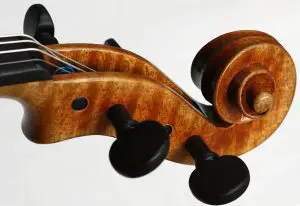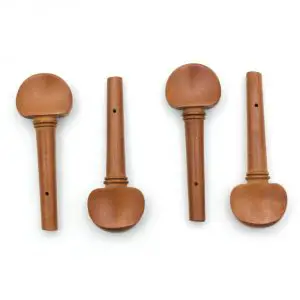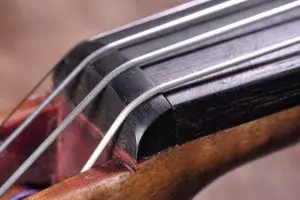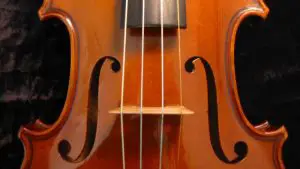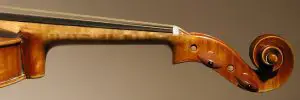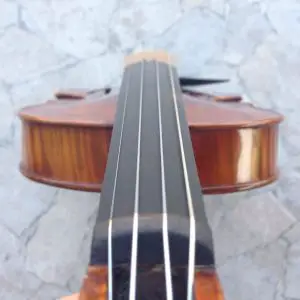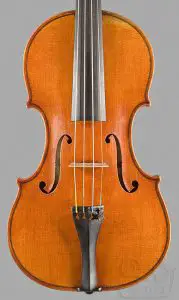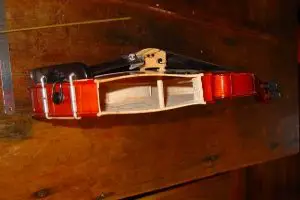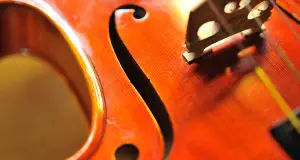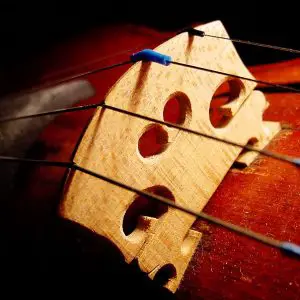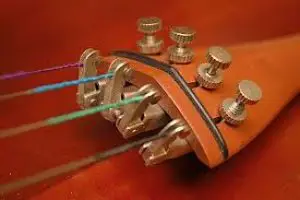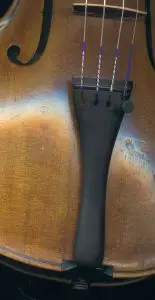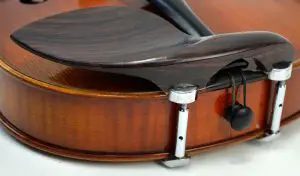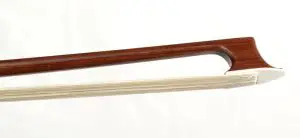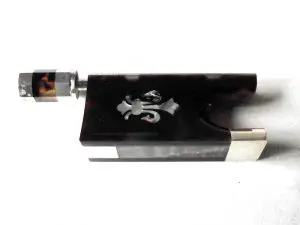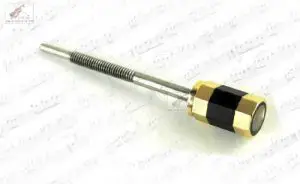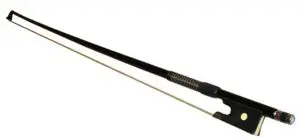Violin Parts – A Guide for the Beginner Violin Player
If you think about it, there really isn’t another instrument quite like the violin. The violin parts themselves set it apart from other string instruments. It’s these parts that make it truly unique and wonderful.
And since violins are also unique in that they are part of an instrumental family that makes up some of the oldest modern instruments, it’s no wonder that parts and components age and wear out. How would you feel if you were more than 100 years old and were expected to perform as wonderfully as you always have?
It is impossible not to love the amazing music that comes from a violin. From movie sound tracks and classic radio ballads to fiddler music and of course orchestral music. People of all ages are drawn to music with violins whether they realize it or not. It’s a part of our life soundtrack when you think about it from the day we are born.
It’s no coincidence then that more and more people are inclined to learn playing a violin. Unfortunately, the majority of them stop on the halfway when meeting the first obstacles.
In today’s early learning environment, it’s hard enough to learn proper holding and playing technique. Understanding how a violin works, what each part does to help it produce quality tones and how to care for and maintain these parts is not always a priority.
For all beginners it is crucial to at least know the names of the different violin parts they play. The reason is that they should clearly understand what part they need to re-tune or restring if necessary. If not, you will look like a driver who doesn’t know how to open the car hood.
To avoid similar situations and become a professional violin player, you should know all ins and outs of the instrument you play. Thus, let’s discuss them one by one and get familiar with each of them.
Violin Parts
Scroll
The very top of the violin is called scroll. It is situated above the pegbox and is generally identified by its characteristic curl design. Nonetheless, the ancestors of the violins had scrolls that were carved with figures or animals.
Tuning Pegs/Pegbox
By the scroll you can find the tuning pegs and peg box. They are located at the top of the instrument and it is here that the strings are attached at the top. In order to tighten the string, the end of it is inserted into a hole in the peg for winding it when needed. Generally the tuning process is done by tightening the peg, and with fine tuners that are used for strings needing less than half a tone.
Check Out Our Best Violin Pegs Reviews
Nut
The connector between the peg box and the fingerboard is called nut. It has four grooves and the strings sit on them so that they could be properly spaced. When restringing a violin or when the strings are very loose, you had better check whether they are sitting in the grooves at the nut and at the bridge before tightening the strings.
Strings
The strings on this instrument are tuned according to G, D, A, E from lowest to highest. They considerably vary in quality and their quality makes a big difference regarding the tonal quality produced by a violin. Generally strings are made from different metals: aluminum, gold for the E-string, steel, etc). Nevertheless, violin makers often use some synthetic materials to produce strings. Such “cat gut” strings are still popular in these days and they are made out of animal intestine.
Check out our Best Violin Strings Reviews
Neck
Another one from violin parts that we will get familiar is the neck. It is the part of the instrument that carries most of the stress made by the strings. The neck is the long wooden part situated behind the fingerboard and the latter is glued to it. Modern violins have more slender and longer neck compared to their baroque ancesters.
Fingerboard
Underneath the strings you will find some smooth black surface, it is the fingerboard glued to the neck of violin. You may often notice some black residue on the fingers of violinists. You should know that it is the black polish rubbing off from the fingerboard. Eventually, if it starts to happen, then the violin is near to refinishing.
Body
In acoustic instruments the sound is amplified by a violin part called body. Generally it is made of various types of wood. Many violins are made with two-piece backs that are joined together with a seam down. Whereas violins having one-piece back are more preferred as, they have increased resonance.
Sound post
Under the bridge of the instrument you can see the round sound post that runs from the front-piece to the back-piece inside the violin. It plays a crucial role in the sound produced by the instrument. It also supports the violin structure from the pressure coming from the tension of the strings.
F holes
When the string reverberates inside the violin, the sound waves come out from the body through F holes. Beginners can direct them towards the audience to reach their best music in this way. This step will allow the audience to catch the best possible sounds. However, there is no need to worry for good sounds if you play an electric violin or you are playing with a pick-up.
Bridge
In various angles of curvature you can find the bridge of the violin. Due to the small angles you can more easily play double or triple stops (It means playing two or three strings meanwhile). Nevertheless, you can hit the right notes easily thanks to curved bridges without scraping across a wrong string.
Classical violinists prefer violin with more curved bridges. However, fiddle and country players give the priority to the flatter bridges. To space the strings out evenly enable ridges that are a part of the bridge. E-strings with good quality usually have a small plastic tube wrapped around the string. This is located over the bridge and don’t allow the thin E-string to cut into the wood.
Check Out Our Best Violin Bridges Reviews
Fine Tuners
You can find the fine tuners either on the four strings or on the E-string. It is recommended for beginners to start with violins having four fine tuners, as in this case the possibility of breaking a string while tuning is less likely. Fine tuners play a role of a screw that presses down the lever and then tightens the string. Reaching to the end of the screw, a fine tuner should be unscrewed entirely. After that the peg should be tightened before you will use a fine tuner.
Tailpiece/Endpin
At the bottom of the violin the strings are attached to the tailpiece by the endpin or end button. The latter is a small button on the violin that rubs against the players’ neck. It is the closest part of the violin to the chin of the player.
Chin rest
Another additional invention regarding violins is the chin rest. It supports the player while playing the instrument. This is one of the most important violin parts, since it helps the violinist to hold the violin and accordingly it enables the player to move his/her left hand freely up and down the fingerboard.
Parts of the bow
Hair
The part that touches the string while playing is called hair. Generally it is made out of either a horse hair or some synthetic material. It is important to ensure that the strands are well-rosined to make sound. In case the bow of the violin is not well-rosined, then you will face such kind of errors like slipping on the string, producing softer whisper-like sounds and so on.
Frog
The violin part where all mechanics of the bow meet is called a frog. It is the part of the bow that the player holds.
Screw
The hair is tightened and loosened thanks to the screw which is situated on the end of the frog. When the screw is completely unscrewed on the end of the frog, then the frog comes off the bow, although it is totally easy to reattach. It happens as the screw which is tightened stretches the hair of the bow close to its end and hence increases the tension of the hairs.
Stick
Another part of the bow is the stick. Generally the main stick is made of wood, and sometimes with a metal core. It is eye-catching that the stick should be bendy and supple to be able to support the loosening and tightening process of the bow hair.
The beginners should know that a good bow should be light and it must have a balance point. The latter is the place where you can balance the bow on one finger around a quarter up the bow from the frog. This balance point plays a significant role as it enables the player to perform advanced technical movements like spiccato. It is the movement when the bow bounces off the string between each note.
Pad
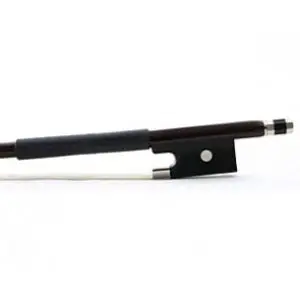 When holding the bow, the player gets assistance by the pad.
When holding the bow, the player gets assistance by the pad.
To sum up, we should state that before making up your mind to play this or that instrument you should find enough efforts and desire within you to learn every detail concerning you beloved instrument. It is a shame for any musician to be unfamiliar with the instrument they play. Thus, all beginners had better learn these parts one by one and never feel the shame of not recognizing any one of the violin parts.


